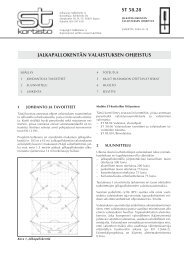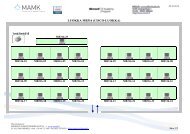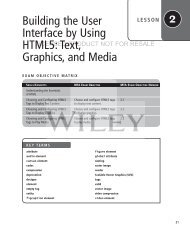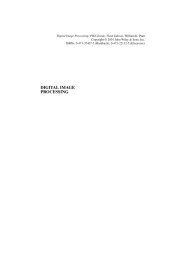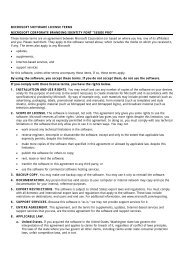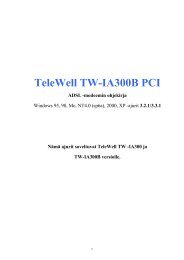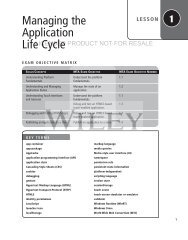TDMS Reader VI
TDMS Reader VI
TDMS Reader VI
You also want an ePaper? Increase the reach of your titles
YUMPU automatically turns print PDFs into web optimized ePapers that Google loves.
Channel Level Information<br />
– Name—contains the UUT Serial Number, which associates the<br />
numeric data with a particular unit.<br />
– Signal—contains an array of floating-point numeric data.<br />
– Several other properties, such as the signal minimum and maximum<br />
will automatically be calculated and added to the file.<br />
<strong>TDMS</strong> <strong>Reader</strong> Inputs and Outputs<br />
Table 1. <strong>TDMS</strong> <strong>Reader</strong> <strong>VI</strong> Inputs and Outputs<br />
Type Name Properties<br />
File Path Control <strong>TDMS</strong> File Path Default Value =<br />
C:\Exercises\Lab<strong>VI</strong>EW Basics II\<br />
<strong>TDMS</strong> Logger\Test Data.<strong>TDMS</strong><br />
String Control Serial Number —<br />
Combo Box Data Set Item 1 = "Time Data"<br />
Item 2 = "Power Spectrum"<br />
Waveform Graph Indicator Channel Data —<br />
String Indicator Test Operator —<br />
Time Stamp Indicator Time of Test —<br />
Begin by opening the <strong>TDMS</strong> and reading the author and time stamp file<br />
properties. Then read the time data or power spectrum data for the specified<br />
UUT and display the data on the Channel Data waveform graph.<br />
© National Instruments Corporation 2 <strong>TDMS</strong> <strong>Reader</strong> <strong>VI</strong>



